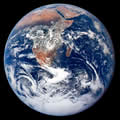SRSP 11-16 Topic 2 U1b – What is real?
This unit looks at some of the models that are used in Science and Religion. They include the ‘virtual reality’ world of I.T. models and advertising. ‘Models’ are systematically developed comparisons between what is familiar and whatever it is that we are trying to understand, in the belief that there are similarities between the properties of each (an isomorphism) which make it easier to grasp what is unfamiliar. They are not literal representations but are aids to our understanding of what is new, invisible or conceptually difficult.
Reality can be defined as ‘the totality of what is, as opposed to what merely seems to be’. But, of course, people will differ widely in what extra entities they would include in the ‘totality’. The difficulty with definitions is that not everyone agrees with a particular definition. For the students’ understanding at this level, realism can be defined as ‘finding out about something which is actually there’.
This unit consists of 3 lessons and is suitable for students aged from 14 to 16 years
Key Questions
- How can we know what is real and what is not?
- Does real mean different things to a scientist and a religious person?
- Must we experience something to call it real?
- Does our ability to perceive reality depend on what we consider reality to be?
Some of the materials can be viewed on screen and some can be downloaded for editing or printing. To view the pdf files you need Adobe Acrobat Reader. See the about section for more details.
Unit Resources
Lesson 1
Lesson Plan: What is real? (Word)
Student Worksheet: What is real? (Word)
Student Extension: What is real? (Word)
Lesson 2
Lesson Plan: How do I know what is real? (Word)
Student Worksheet: How real is real? (Word)
Lesson 3
Lesson Plan: How are models used in science and religion (Word)
Student Worksheet: Models in science and religion (Word)
Student Extension: Models in science and religion (Word)





